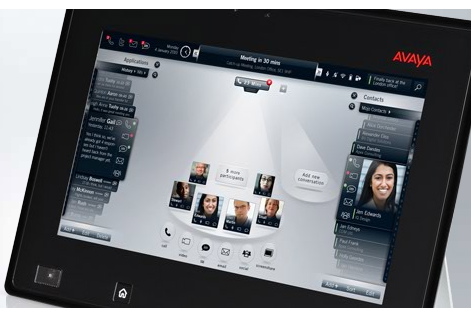 I love a software upgrade! It introduces all manner of new functionality, performance upticks, sometimes reintroduces functionality lost in a previous release and of course delivers higher security and stability through the bug fixes that users need. Today, Polycom announced release 4.0 of the RMX [[MCU]] offering and does all of these things. First introduced in 2007, the RMX product line is the HD-capable successor to the venerable MGC bridging portfolio which continues to satisfy customers with all-[[Standard Definition]] (SD) video networks.
I love a software upgrade! It introduces all manner of new functionality, performance upticks, sometimes reintroduces functionality lost in a previous release and of course delivers higher security and stability through the bug fixes that users need. Today, Polycom announced release 4.0 of the RMX [[MCU]] offering and does all of these things. First introduced in 2007, the RMX product line is the HD-capable successor to the venerable MGC bridging portfolio which continues to satisfy customers with all-[[Standard Definition]] (SD) video networks.
 To recap – the RMX lineup now includes the RMX 1000 (MSRP of $22,000), which is a low-density video conferencing bridge suitable for small organizations, where a device capable of some mixture of a maximum 20 voice sessions or 20 HD video sessions is more than enough power. The RMX 2000 (MSRP starting at $37,000 and depending on software licensing can reach as much as $263,000) delivers as many as 800 audio sessions or 40 HD (720p at 30 frames per second) sessions. For 1080p users, the RMX 2000 can bind 20 sessions at 30 fps.
To recap – the RMX lineup now includes the RMX 1000 (MSRP of $22,000), which is a low-density video conferencing bridge suitable for small organizations, where a device capable of some mixture of a maximum 20 voice sessions or 20 HD video sessions is more than enough power. The RMX 2000 (MSRP starting at $37,000 and depending on software licensing can reach as much as $263,000) delivers as many as 800 audio sessions or 40 HD (720p at 30 frames per second) sessions. For 1080p users, the RMX 2000 can bind 20 sessions at 30 fps.
This new release introduces a new circuit pack called the MPM+ card; the RMX 2000 can support two of the MPM+ cards in a single chassis. When operated together with the DMA, high availability and high scalability can be assured in a distributed network design since the DMA enables a segmentation of control signaling from the media stream, which enables more finite real-time operational decisions. The platform assumes IP sessions, but does offer T1 and E1 ISDN cards for PSTN termination.
Key software enhancements include the new Video Clarity feature which introduces algorithms that interpolate the appropriate pixel color for lower resolution SD media streams when presented on higher resolution displays. Polycom claims the effect raises the experience typically one notch – QCIF -> CIF; CIF -> SD; SD -> HD (720p). This compensates for one of the frequent problems in displaying low resolution images on high resolution monitors, namely pixelation and blured images, which can be very disturbing when an SD user is displayed as one input on a telepresence-scale display. Lifesized visual can be a disappointment when an SD image is enlarged to fullsize and displayed adjacent to an other telepresence-grade image.
The returning functionality is the ability to schedule sessions. In previous releases, ad hoc sessions were the only mode supported, which precluded some market segments where planning of resource allocations are more formal.
The RMX is a multi-media bridge. It is too expensive to use as an audio conferencing bridge, is more expensive than SD-only bridges but since it can integrate video and audio conferences together – bringing in that non-video supported mobile CxO who has to call in from vacation, from a remote hotel or – since it can integrate HD and SD sessions together without downgrading everybody's visual experience – it has a role to play in most collaboration environments. Users can assign limits to each media class using the Fixed Resource Capacity feature which sets up sliders for each class (Audio only, CIF-only, SD-only, 720p only, 1080p only or any combination). The RMX also supports Flexible Resource Capacity so that users can support whatever classes in whatever combinations endusers demand.










